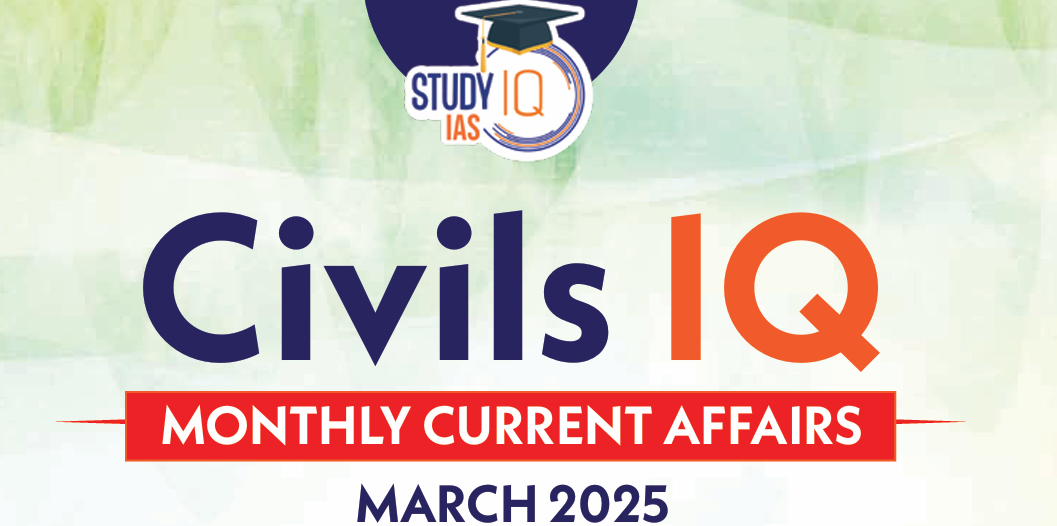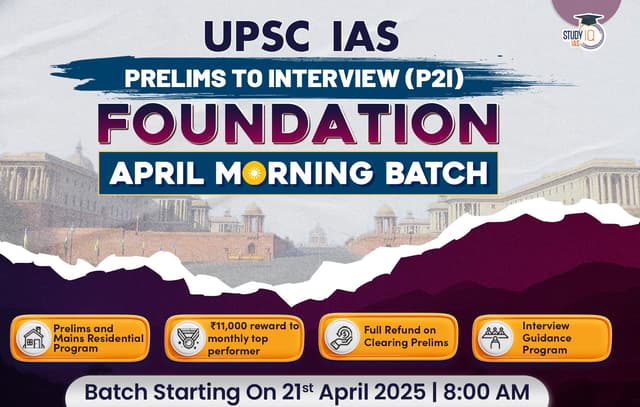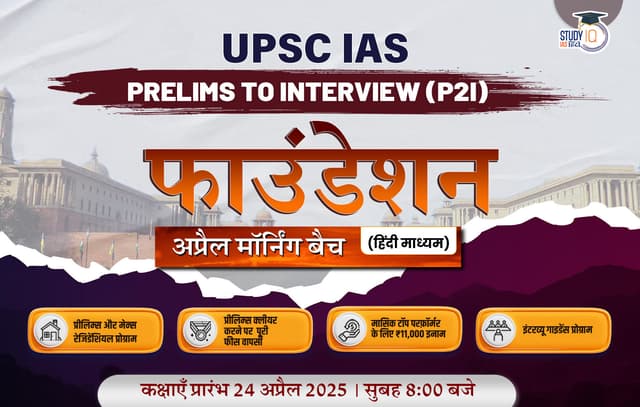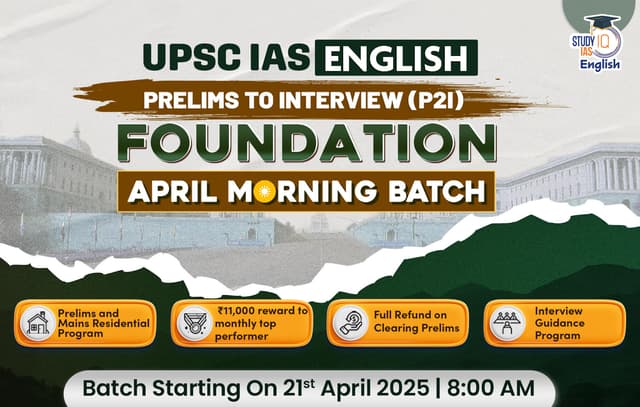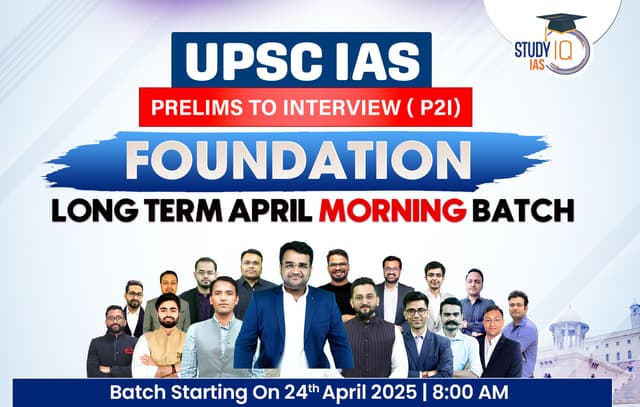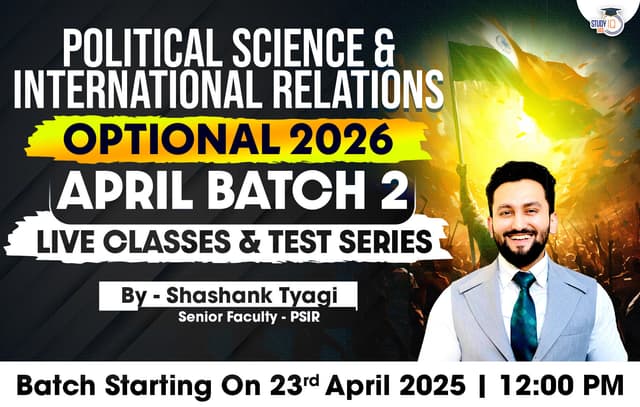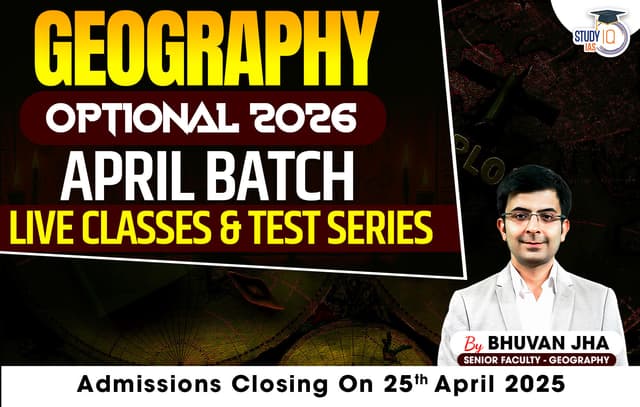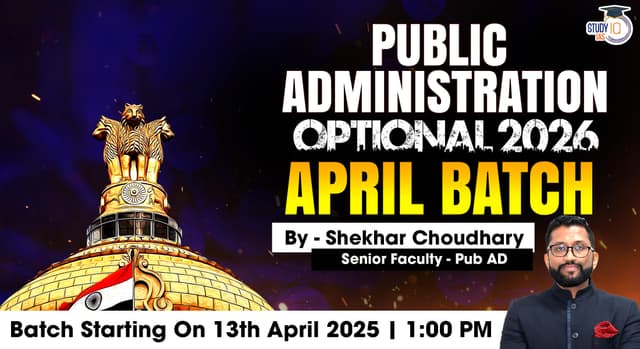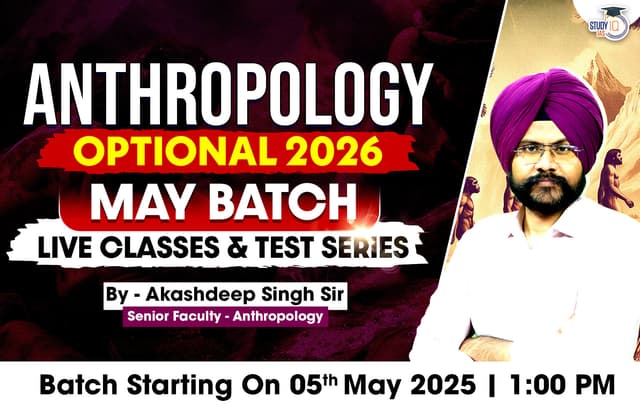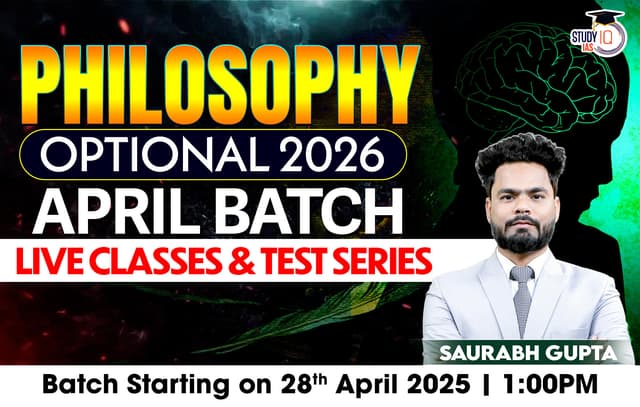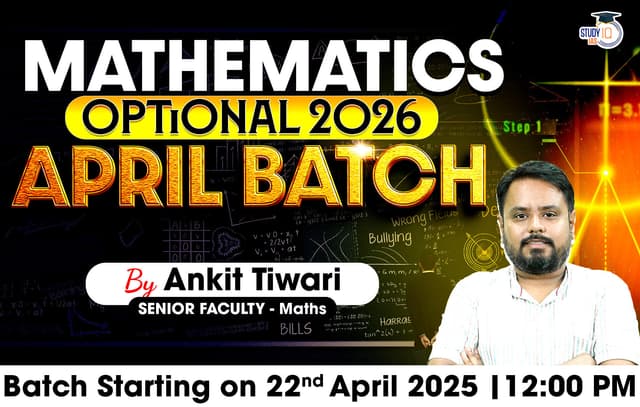Daily Quiz 18 April 2025
Quiz-summary
0 of 5 questions completed
Questions:
- 1
- 2
- 3
- 4
- 5
Information
- Click on – ‘Start Quiz’ button
- Solve Questions
- Click on ‘Next’ button
- Click on ‘Finish Quiz’ button
- Now click on ‘View Questions’ button – here you will see solutions and links.
- The test contains a total of 5 questions.
- Click on the most appropriate option to mark it as your answer.
- You will be awarded Two marks for each correct answer.
- You can change your answer by clicking on some other option.
- A Number list of all questions appears at the top side of the screen.
- You can access the questions in any order by clicking on the question number given on the number list.
- You can use rough sheets while taking the test.
- Do not use calculators, log tables, dictionaries, or any other printed/online reference material during the test.
- Do not click the button “Finish Quiz” before completing the test. A test once submitted cannot be resumed.
You have already completed the quiz before. Hence you can not start it again.
Quiz is loading...
You must sign in or sign up to start the quiz.
You have to finish following quiz, to start this quiz:
- 1
- 2
- 3
- 4
- 5
- Answered
- Review
-
Question 1 of 5
1. Question
1 pointsConsider the following statements with reference to Gas Hydrates:
1. Gas hydrates consist of molecules of natural gas enclosed within a solid lattice of water molecules.
2. Gas hydrate deposits are found wherever methane occurs in the presence of water under elevated pressures and at relatively low temperatures.
4. Methane that forms hydrate can only be thermogenic, created by geological processes deeper within the earth.
How many of the above statements are correct?Correct
Answer: B
Explanation:
- Statements 1 and 2 are correct: Gas hydrates consist of molecules of natural gas (the chief constituent of natural gas; methane) enclosed within a solid lattice of water molecules. When brought to the earth’s surface, one cubic meter of gas hydrate releases 164 cubic meters of natural gas. Gas hydrate deposits are found wherever methane occurs in the presence of water under elevated pressures and at relatively low temperatures, such as beneath permafrost or in shallow sediments along deepwater continental margins.
Statement 3 is not correct: Methane that forms hydrate can be both biogenic, created by biological activity in sediments, and thermogenic, created by geological processes deeper within the earth. Once assumed to be rare, gas hydrates are now thought to occur in vast volumes and to include 250,000–700,000 trillion cubic feet of methane and the formation thickness can be several hundred meters thick.
Incorrect
Answer: B
Explanation:
- Statements 1 and 2 are correct: Gas hydrates consist of molecules of natural gas (the chief constituent of natural gas; methane) enclosed within a solid lattice of water molecules. When brought to the earth’s surface, one cubic meter of gas hydrate releases 164 cubic meters of natural gas. Gas hydrate deposits are found wherever methane occurs in the presence of water under elevated pressures and at relatively low temperatures, such as beneath permafrost or in shallow sediments along deepwater continental margins.
Statement 3 is not correct: Methane that forms hydrate can be both biogenic, created by biological activity in sediments, and thermogenic, created by geological processes deeper within the earth. Once assumed to be rare, gas hydrates are now thought to occur in vast volumes and to include 250,000–700,000 trillion cubic feet of methane and the formation thickness can be several hundred meters thick.
-
Question 2 of 5
2. Question
1 pointsWith reference to the Panchayat Advancement Index (PAI), consider the following statements:
- It was introduced by NITI Aayog to measure the performance of Gram Panchayats.
- It is a tool to localize Sustainable Development Goals (SDGs) in rural India.
- Among the parameters used are “Healthy Panchayat” and “Women-Friendly Panchayat”.
How many of the above statements are correct?
Correct
Answer: B
Explanation:
- Statement 1 is not correct and statements 2 and 3 are correct: In a major stride towards localizing Sustainable Development Goals (SDGs) and empowering grassroots governance, the Ministry of Panchayati Raj has launched the Panchayat Advancement Index (PAI) — a transformative tool to measure the progress of over 2.5 lakh Gram Panchayats (GPs) across India.
The PAI captures Panchayats’ performance across nine themes of Localized SDGs (LSDGs) ie. Poverty-Free and Enhanced Livelihoods in Panchayat, Healthy Panchayat, Child-Friendly Panchayat, Water-Sufficient Panchayat, Clean and Green Panchayat, Panchayat with Self-Sufficient Infrastructure, Socially Just and Socially Secured Panchayat, Panchayat with Good Governance and Women-Friendly Panchayat. These themes align global goals with rural realities, helping local governments tailor their strategies for holistic development.
Incorrect
Answer: B
Explanation:
- Statement 1 is not correct and statements 2 and 3 are correct: In a major stride towards localizing Sustainable Development Goals (SDGs) and empowering grassroots governance, the Ministry of Panchayati Raj has launched the Panchayat Advancement Index (PAI) — a transformative tool to measure the progress of over 2.5 lakh Gram Panchayats (GPs) across India.
The PAI captures Panchayats’ performance across nine themes of Localized SDGs (LSDGs) ie. Poverty-Free and Enhanced Livelihoods in Panchayat, Healthy Panchayat, Child-Friendly Panchayat, Water-Sufficient Panchayat, Clean and Green Panchayat, Panchayat with Self-Sufficient Infrastructure, Socially Just and Socially Secured Panchayat, Panchayat with Good Governance and Women-Friendly Panchayat. These themes align global goals with rural realities, helping local governments tailor their strategies for holistic development.
-
Question 3 of 5
3. Question
1 pointsConsider the following statements with reference to Nilgiri tahr:
- It is the only mountain ungulate in southern India.
- It is the state animal of Kerala.
- This endemic species of the Western Ghats is listed as Endangered in the IUCN Red List of Threatened Species.
How many of the above statements are correct?
Correct
Answer: B
Explanation:
- Statement 1 is correct: The Nilgiri tahr is the only mountain ungulate in southern India amongst the 12 species present in India.
- Statement 2 is not correct: It is also the state animal of Tamil Nadu. State Animal of Kerala is the Indian Elephant.
Statement 3 is correct: This endemic species of the Western Ghats is listed as Endangered in the IUCN Red List of Threatened Species and is protected under Schedule I of the Wildlife (Protection) Act of India, 1972.
Incorrect
Answer: B
Explanation:
- Statement 1 is correct: The Nilgiri tahr is the only mountain ungulate in southern India amongst the 12 species present in India.
- Statement 2 is not correct: It is also the state animal of Tamil Nadu. State Animal of Kerala is the Indian Elephant.
Statement 3 is correct: This endemic species of the Western Ghats is listed as Endangered in the IUCN Red List of Threatened Species and is protected under Schedule I of the Wildlife (Protection) Act of India, 1972.
-
Question 4 of 5
4. Question
1 pointsConsider the following statements with reference to Lok Sabha seats:
- Currently, the Lok Sabha has a strength of 543 seats.
- The Constitution of India requires the allotment of seats to each state to be in proportion to its population.
Which of the statements given above is/are correct?
Correct
Answer: C
Explanation:
Statements 1 and 2 are correct: Article 81(1) mandates that the Lok Sabha shall consist of not more than 530 members who have to be chosen by direct election from territorial constituencies in the states; another 20 members are to represent the Union Territories. Currently, the Lok Sabha has a strength of 543 seats. Article 81(2) requires the allotment of seats to each state to be in proportion to its population, with the further condition that the ratio between the population of a state and the number of seats allocated shall, as far as practicable, be the same for all the states. Article 82 requires the readjustment of seats after the completion of each Census, and it will now have to be done under the Delimitation Act, 2002.
Incorrect
Answer: C
Explanation:
Statements 1 and 2 are correct: Article 81(1) mandates that the Lok Sabha shall consist of not more than 530 members who have to be chosen by direct election from territorial constituencies in the states; another 20 members are to represent the Union Territories. Currently, the Lok Sabha has a strength of 543 seats. Article 81(2) requires the allotment of seats to each state to be in proportion to its population, with the further condition that the ratio between the population of a state and the number of seats allocated shall, as far as practicable, be the same for all the states. Article 82 requires the readjustment of seats after the completion of each Census, and it will now have to be done under the Delimitation Act, 2002.
-
Question 5 of 5
5. Question
1 pointsWith reference to CAPTCHA, consider the following statements:
- CAPTCHA is a system designed to distinguish human users from bots using tasks that are easy for humans but difficult for machines.
- CAPTCHA is based on the idea of the Turing test, which helps determine whether a machine can act like a human.
- reCAPTCHA contributed to the digitisation of books by using scanned words users were asked to type.
How many of the above statements are correct?
Correct
Answer: C
Explanation:
- Statement 1 is correct: CAPTCHA is a clever way to tell if you’re a real person or a robot. It’s like a brainteaser that only humans can solve. Imagine you’re trying to figure out what’s written in a distorted picture. It’s tricky for computers, but it’s easy for us. Over time, CAPTCHA has gotten smarter and started to include other challenges to verify humans. Now, you might have to pick an image with a specific object in it, like a car or a traffic light. These challenges are even harder for computers/bots to solve.
- Statement 2 is correct: CAPTCHA is based on an idea called the Turing test. This was proposed by British mathematician Alan Turing back in the 1950s. The idea was to create a test that could tell if a machine could act like a human. CAPTCHA does just that by making sure that tasks are easy for humans but hard for computers.
- Statement 3 is correct: At first, CAPTCHA mostly used distorted text to check if a user is a real person. But as computers got better and bots became more advanced, CAPTCHA had to adapt. Now, it has a variety of different challenges to keep us safe.
In 2009, a new way to check if you’re a real person called reCAPTCHA came along. It used words from scanned books to verify users. This was a new idea as it not only stopped bots from taking over, but it also helped digitise printed texts. When you solved a reCAPTCHA challenge, you were actually helping to digitise books by typing out words that the computer couldn’t recognise. This idea showed how users could come together to help improve digitisation of the world’s books.
Incorrect
Answer: C
Explanation:
- Statement 1 is correct: CAPTCHA is a clever way to tell if you’re a real person or a robot. It’s like a brainteaser that only humans can solve. Imagine you’re trying to figure out what’s written in a distorted picture. It’s tricky for computers, but it’s easy for us. Over time, CAPTCHA has gotten smarter and started to include other challenges to verify humans. Now, you might have to pick an image with a specific object in it, like a car or a traffic light. These challenges are even harder for computers/bots to solve.
- Statement 2 is correct: CAPTCHA is based on an idea called the Turing test. This was proposed by British mathematician Alan Turing back in the 1950s. The idea was to create a test that could tell if a machine could act like a human. CAPTCHA does just that by making sure that tasks are easy for humans but hard for computers.
- Statement 3 is correct: At first, CAPTCHA mostly used distorted text to check if a user is a real person. But as computers got better and bots became more advanced, CAPTCHA had to adapt. Now, it has a variety of different challenges to keep us safe.
In 2009, a new way to check if you’re a real person called reCAPTCHA came along. It used words from scanned books to verify users. This was a new idea as it not only stopped bots from taking over, but it also helped digitise printed texts. When you solved a reCAPTCHA challenge, you were actually helping to digitise books by typing out words that the computer couldn’t recognise. This idea showed how users could come together to help improve digitisation of the world’s books.
Results
0 of 5 questions answered correctly
Your time:
Time has elapsed
You have reached 0 of 0 points, (0)
| Average score |
|
| Your score |
|
Categories
- Not categorized 0%
| Pos. | Name | Entered on | Points | Result |
|---|---|---|---|---|
| Table is loading | ||||
| No data available | ||||
Sharing is caring!


 Daily Quiz 17 April 2025
Daily Quiz 17 April 2025
